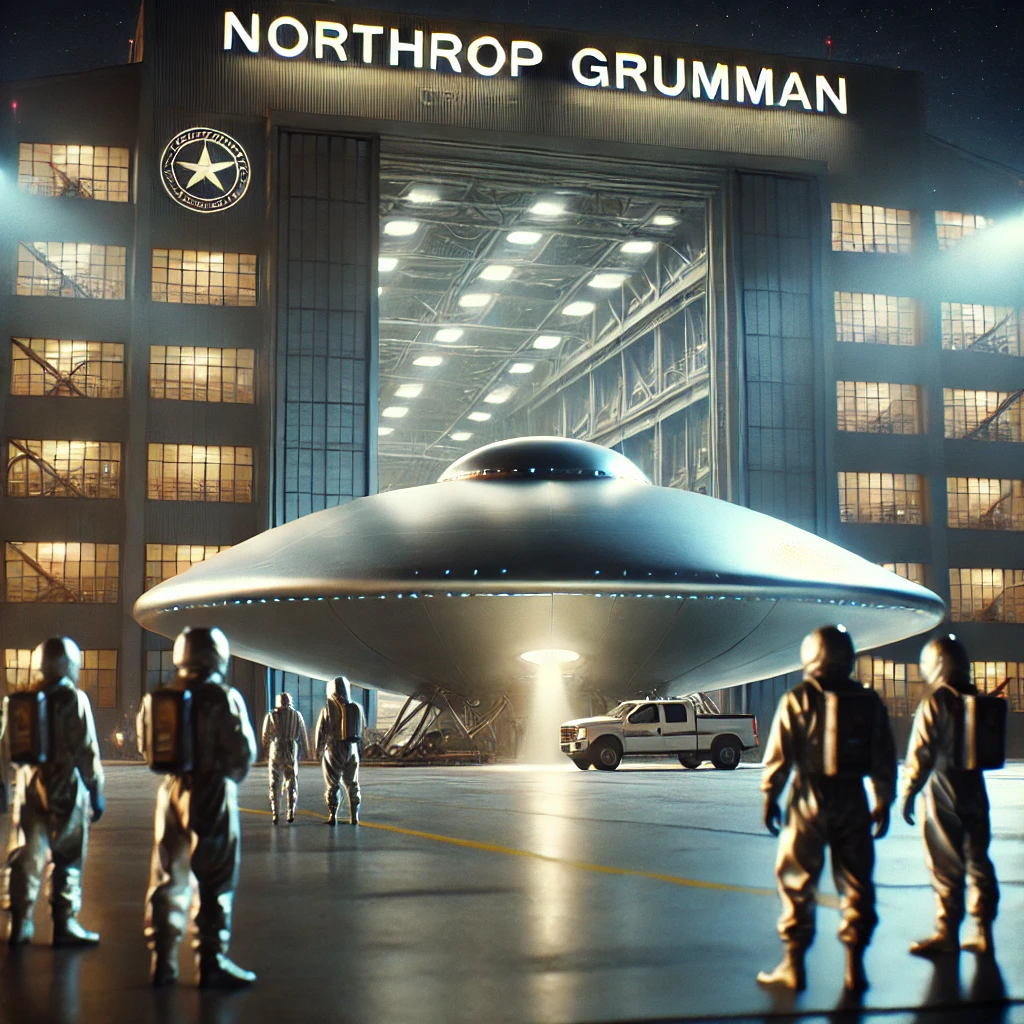Northrop Grumman’s UFO Denial vs. Secret Crash Retrieval Programs

Northrop Grumman has positioned itself as a rational voice in the ongoing debate over UFOs, categorically denying extraterrestrial involvement while simultaneously being implicated in secretive UFO crash retrieval programs. In a corporate statement, Northrop Grumman explicitly asserts that “UFO sightings are real, but aliens are not responsible,” reinforcing a mainstream scientific narrative that distances their aerospace projects from anything remotely alien. However, this public-facing rhetoric stands in stark contrast to mounting evidence suggesting the company’s deep involvement in unidentified aerial phenomena (UAP) recovery and research.
The contradiction becomes even more apparent when juxtaposed with revelations from various whistleblowers and declassified government documents. While Northrop Grumman publicly dismisses alien technology, its historical ties to classified aerospace projects—many of which reportedly involve non-human craft—suggest otherwise. Reports from former military personnel and intelligence insiders have linked the company to crash retrieval operations where unidentified craft were studied under strict secrecy. Much like ‘a blind man leading the blind,’ Northrop Grumman attempts to dismiss UFO claims while holding the very answers they publicly reject.
Robert Lazar’s claims about working at a clandestine facility near Area 51 and encountering advanced alien craft remain a controversial subject. According to the Northrop Grumman article Area 51: Aliens, or Just a Simple Myth-Understanding?, “While some dismiss him as a fraud due to inconsistencies in his academic and employment records, others believe his statements align too closely with classified aerospace projects to be ignored.” His descriptions of propulsion systems allegedly based on Element 115 and anti-gravity technology continue to fuel speculation that major defense contractors, including Northrop Grumman, are reverse-engineering non-human technology under strict secrecy. Northrop Grumman openly mocks Lazar in their article, portraying his claims as outlandish. However, time will tell if he was indeed telling the truth. His core assertion—that advanced aerospace firms have access to technology beyond public understanding—remains a recurring theme in whistleblower accounts and classified leaks.
Multiple articles published by Northrop Grumman attempt to poke fun at UFO-related claims while simultaneously dismissing any notion of their involvement. Titles such as “UFO Sightings Are Real, But Aliens Are Not Responsible,” “Area 51: Aliens or Just a Simple Myth?,” “NASA is Joining the Search for UFOs, But Not Because They Believe Aliens Are the Cause,” “Unsolved Mysteries: Michigan UFOs or Massive Misunderstanding?,” “Exploring the UAPs Report: Is Alien Invasion Imminent?,” and “Aliens in the Ocean: Is Sea-ing Believing?” each contribute to this ongoing deflection.
Northrop Grumman’s articles assert that “the U.S. military’s interest in UFOs is purely a matter of national security, not extraterrestrial intrigue,” and suggest that “many UAP sightings can be explained by advancements in aerospace technology.” These positions contrast with classified documents and firsthand accounts from intelligence officials, which indicate that aerospace firms, including Northrop Grumman, have been involved in highly classified research on recovered craft.
Interestingly, the legacy of John Northrop, founder of Northrop Corporation, adds further complexity to this discussion. Northrop was a visionary in aircraft design, pioneering the flying wing concept, which ultimately laid the groundwork for modern stealth technology, including the B-2 Spirit bomber. His passion for unconventional aircraft structures suggests a longstanding interest in advanced aerodynamics and propulsion systems. Northrop expressed a deep curiosity about UFOs after hearing a firsthand account from his chief test pilot, Max Stanley. In a 1974 interview, he acknowledged the credibility of the sighting and speculated that UFOs might utilize unknown energy sources, possibly fusion-related propulsion systems that defied conventional physics. He further noted that UFOs displayed flight characteristics inconsistent with known technology, including rapid acceleration, hovering, and silent propulsion.
New revelations add even more weight to these contradictions. Investigative journalist Jeremy Corbell has asserted that the U.S. government and major defense contractors, including Northrop Grumman, are actively engaged in the possession and study of multiple undamaged and functional non-human craft. According to Corbell, some of these classified programs extend from older UFO initiatives and involve both the Department of Defense and allied intelligence agencies. His statements align with reports from other whistleblowers, including William Tompkins, who claimed to have worked on top-secret projects at Northrop involving the development of anti-gravity propulsion systems.
Tompkins, an aerospace engineer and former naval intelligence officer, alleged that he was directly involved in designing advanced spacecraft capable of interstellar travel. He claimed that Northrop, along with other defense contractors, worked on highly classified projects that integrated extraterrestrial technologies. Tompkins asserted that his work was influenced by interactions with Nordic extraterrestrials who provided technical insights into anti-gravity and propulsion systems. According to his accounts, these beings played a key role in guiding classified aerospace developments, which contradicts Northrop Grumman’s modern claims that UAP sightings are merely misidentified human-made craft.
Further strengthening these assertions, discussions surrounding the convergence of military innovation and UAP-inspired technology have gained traction. Many experts believe that materials and designs inspired by UAP encounters have made their way into classified aerospace programs. Reports suggest that defense contractors like Northrop Grumman are engaged in the development of meta-materials capable of morphing on command and aircraft structures that integrate multiple functions seamlessly, mirroring descriptions of UFOs that lack traditional seams and propulsion systems. The ability of these craft to exhibit sudden acceleration and unparalleled maneuverability has led to speculation that breakthroughs in propulsion and material sciences are being actively explored under top-secret projects.
The existence of intact non-human craft in the hands of defense contractors raises critical questions. If Northrop Grumman is actively studying and possibly reverse-engineering these technologies, its public dismissal of UFOs as mere misidentifications or advanced drones appears increasingly disingenuous. This aligns with the assertion that high-profile aerospace firms are not only aware of, but deeply involved in, non-human technological research.
